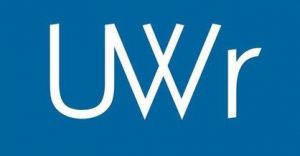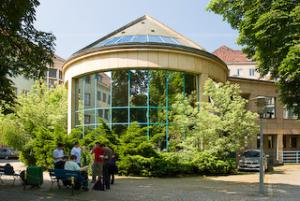Description of the present research
Our division accommodates many research areas:
For many years major research interest of prof. Jerzy Kowalski-Glikman was quantum gravity. In recent years he has been working on kappa deformation of Poincare symmetry, quantum gravity phenomenology, BMS symmetry, applications of the Wheeler-De Witt equation, and metastring theory.
Fields of interest of prof. Zbigniew Haba concern: cosmology, quantum field theory in an expanding universe, decoherence by gravitational waves, detection of gravitons, and methods of functional integration in quantum field theory.
Prof. Andrzej Borowiec is focused on various branches of theoretical and mathematical physics including differential geometric methods in relation to gravity, gauge theories, as well as algebraic methods in relation to noncommutative geometry and new symmetries in physics. Currently, there are two main fields of interest:
- Extended theories of gravity, as e.g. Palatini or hybrid f(R)-gravity, scalar-tensor theories and their applications to the construction of viable cosmological models in the context of dark energy and dark matter problems.
- Quantum deformations, quantum groups, and supergroups with special emphasis on kappa-Poincare type algebras, Drinfeld twist quantization scheme, corresponding quantum spaces, differential calculi, noncommutative field theories and their applications for studying possible quantum gravity effects.
Dr Remigiusz Durka focuses on gravity and supergravity models in a variety of generalizations (Lovelock theory, MacDowell-Mansouri formulation, BF theory, resonant/Maxwell/S-expanded algebras) as well as black holes thermodynamics, and Taub-Nut spacetime (supposedly representing gravitational analog of the magnetic monopole). In recent years, he has increased shares of research related to symbolic computing and modern technologies within the framework of General Relativity.
Direct detection of gravitational waves gives the unique opportunity to study relativistic astrophysical phenomena predicted by the general theory of relativity and to improve our understanding of the Universe. The multiple detectors are currently operating on Earth (LIGO, VIRGO, TAMA, GEO) and the development of next-generation interferometers is underway; planned space-born detectors, LISA, DECIGO, TianQin, Taiji, BBO, working in the lower frequency bands (below 1 Hz) will complement the high-frequency observations on Earth (10–1000 Hz). Studies of dr Arkadiusz Błaut involve data analysis and parameter estimation of the future space detectors, like LISA, for nearly monochromatic gravitational waves in the low and high-frequency regimes. The sources include populations of Galactic compact binaries with white dwarf, neutron star, and black hole components; a special role is played by the so-called verification binaries – known systems that are bright enough to be detected by the space gravitational wave detectors. Despite the possibility of extending our knowledge of astrophysical phenomena confronting them with models based on general relativity gravitational waves are used to test the theory itself, potentially discriminating among various competing alternatives. Recent studies of dr Błaut have aimed at this direction: involving an analysis of the frequency responses, in low and high-frequency domains, of gravitational wave detectors excited by gravitational waves predicted in a class of metric theories of gravity, both for deterministic (astrophysical) and stochastic (cosmological) signals. In a broader perspective, he is interested in cosmology, quantum gravity, neutrino physics and, recently, the dark matter searches, especially in the context of gravitational wave detectors. Recent papers: 1. “Parameter estimation accuracies of Galactic binaries with eLISA“, Astroparticle Physics 101 (2018) 17–26 // 2. “Gauge independent response of a laser interferometer to gravitational waves“, Class. Quantum Grav. 36 (2019) 055004 //3. “Neutrino elastic scattering on polarized electrons as a tool for probing the neutrino nature“, Eur. Phys. J. C (2020) 80:261
The research area of dr Wiesław Sobków concerns the nonstandard (beyond the standard model) interactions of neutrinos and dark matter particles with the use of (un)polarized targets (electrons, nucleons, nuclei). The experimental accuracy of the present tests still allows for the participation of non-standard couplings. There is clear evidence for the existence of dark matter in the Universe, but it is only indirect and it is essentially based upon gravitational effects on stars, galaxy clusters, and the cosmic microwave background radiation. The nature of dark matter is still unknown. The two main points are particularly important here:
- The question of time reversal symmetry violation (equivalent to CP breaking when CPT symmetry is maintained)
- The issue of nature of neutrinos and dark matter.
The studies are carried out based on effective field theory. The main goal is to find the appropriate observables sensitive to new effects using elastic scattering of neutrinos and dark matter on various targets. Preliminary considerations show that the azimuthal asymmetries of scattered particles can be suitable candidates. It is worth pointing out that there are many works indicating the advantages of direct detection experiments using polarized targets.
Dr. Aneta Wojnar‘s primary research focuses on the thermodynamics of gravitational systems, with specific attention to:
• Astrophysical matter in gravity theories: Gravity models like scalar-tensor and metric-affine theories aim to address gaps in General Relativity (GR) while modifying Newtonian limits. This impacts the evolution and structure of stars, white dwarfs, and planets, offering tools to test gravity theories and dark matter models. Observational methods, such as the lithium depletion technique for dating stars, depend on the underlying gravity theory.
• Astrophysical gravity tests: The internal structures of planets like Earth and Mars vary slightly in extended gravity models, making them ideal for testing these theories. Seismic data helps refine gravity models, and future neutrino telescopes are expected to provide even more precise constraints, especially on Earth’s core.
• Big Bang Nucleosynthesis beyond GR: The abundance of light elements formed shortly after the universe’s creation is sensitive to the cosmological models provided by alternative gravity theories. These theoretical predictions are compared with observed ratios of light elements like lithium to hydrogen. Dr. Wojnar has shown that such element abundances differ in gravity theories, challenging common approaches to solving the “cosmological lithium problem.”
She is also interested in the lensing of gravitational waves by astrophysical objects, a promising tool for testing gravity theories and understanding gravitational interactions.
History
The present structure of the Division of Theory of Gravity and Fundamental Interactions is the result of decades of evolution, shaped by the contributions of both past and present members of the group. For a long time, a super-division existed in the Institute of Theoretical Physics, gathering researchers working on fundamental physics. In the 1990s, this super-division was split into three divisions: Theory of Particles (from which the Neutrino Division later emerged), Mathematical Methods, and Fundamental Interactions and Gravity. Prof. Jerzy Lukierski became the head of the latter division. His research interests, which began with the mathematical theory of fundamental interactions and supersymmetry, evolved toward quantum deformations of symmetry, non-trivial geometries, and theoretical models of quantum gravity. His influence set the direction of research for the next several decades. Interest in quantum groups inspired numerous works in both classical and quantum gravity, which significantly impacted the division’s current research focus.
A key figure in the division for many years was Prof. Andrzej Borowiec, who started in the 1970s in the Division of Mathematical Methods under Prof. Jadczyk, with a focus on differential geometry. The 1970s and 1980s saw many Ph.D. students emerge who made their mark in science outside the University of Wrocław (B. Milewski, A. Ogielski).
From the early 1990s, the division’s central theme was kappa-deformations, pioneered by Prof. Lukierski and his collaborators. After Prof. Jerzy Lukierski stepped down in 2006, Prof. Jerzy Kowalski-Glikman became head of the division, marking an even stronger focus on classical and quantum gravity. At that time, the division welcomed new researchers, including Arkadiusz Błaut and later Marcin Daszkiewicz.
It is also worth noting Zbigniew Jaskólski’s contributions after 2000. His work focused on string theory, conformal field theory, and Liouville theory. He collaborated with researchers like Marcin Piątek and Paulina Suchanek in related areas.
In 2011, following a reorganization and the closure of other divisions within the Institute, several new members joined: Andrzej Frydryszak, Ziemowit Popowicz, and Wiesław Sobków, along with Zbigniew Haba, whose work initially focused on quantum field theory and classical gravity, with a recent emphasis on mathematical methods related to dark matter and dark energy.
Notable postdoctoral researchers under Prof. Jerzy Kowalski-Glikman included Francesco Ciamfrani and Giacomo Rosati (the latter was hired permanently in 2018). Recent additions to the division include Remigiusz Durka, who returned in 2017 after several years abroad as a postdoc and was formerly a master’s and Ph.D. student of Jerzy Kowalski-Glikman, Tomasz Pawłowski (2019), and Jakub Jankowski (2020). The next hires in 2021 concerned Tomasz Trześniewski, who had previously worked at the Wrocław Institute on a past grant, and Falk Hassler settling down in Wrocław after a series of postdocs.
More recently, the division welcomed Aleksander Kozak, a recent Ph.D. graduate from our institute, and Aneta Wojnar, who returned to Wrocław after several postdoctoral positions abroad, further strengthening the division’s expertise in gravity and theoretical astrophysics.
Present division staff with Ph.D. students can be found here: http://www.ift.uni.wroc.pl/divisions/TOFiGK
Keywords
- Classical gravity
- Quantum gravity
- Relativistic and quantum cosmology
- Space-time symmetries deformations
- Quantum groups and supergroups
- Gravitational waves
- Neutrino Physics
- Conformal field theories
- Geometrical and algebraical methods in field theory
- Theory of twistors and supertwistors
- Modern computational tools in theoretical physics
- Theoretical astrophysics


